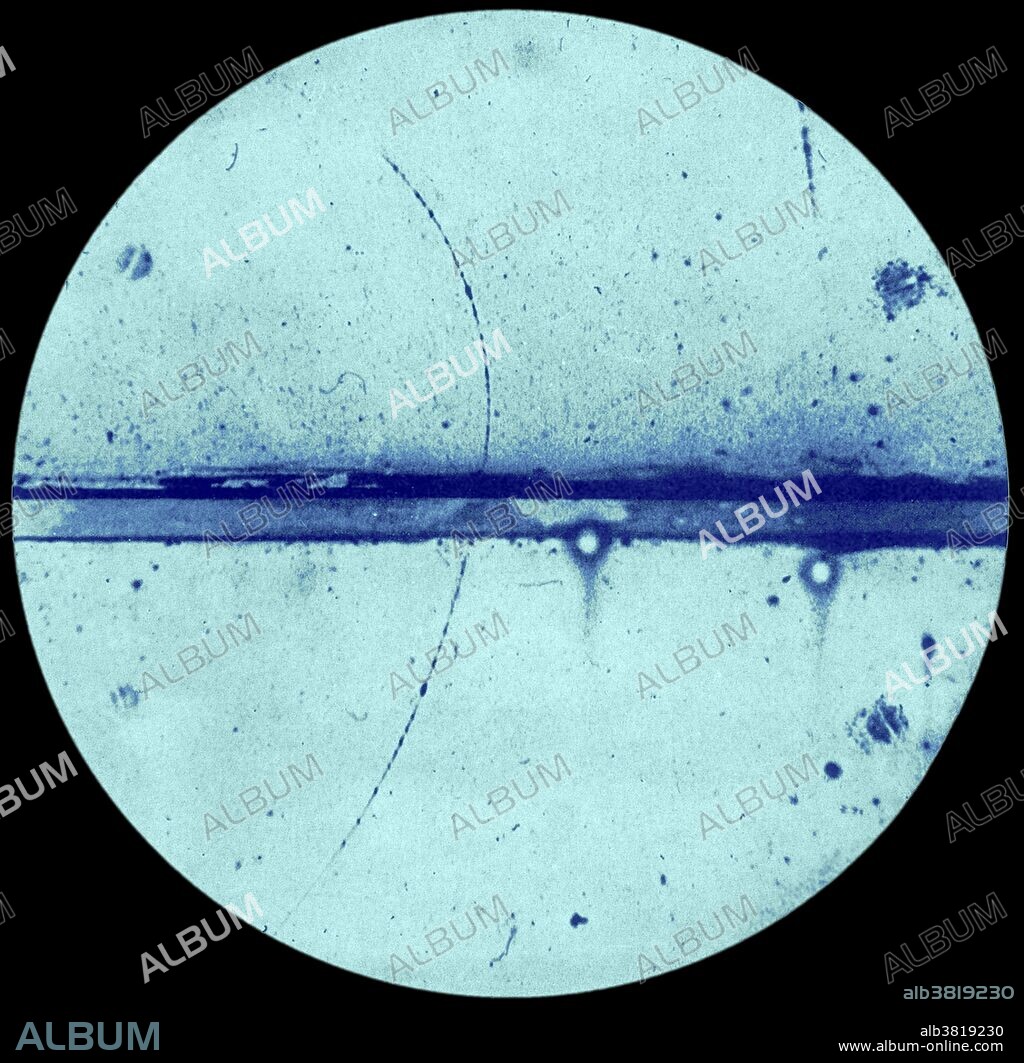alb3819230
Discovery of the Positron, 1932

|
Add to another lightbox |
|
Add to another lightbox |



Buy this image.
Select the use:

Title:
Discovery of the Positron, 1932
Caption:
First evidence existence of positron single track antiparticle of electron from California Institute of Technology; Cloud Chamber; adduced by C.D. Anderson's photo, 1932. Carl David Anderson (September 3, 1905 - January 11, 1991) was an American physicist. Under the supervision of Robert Millikan, he began investigations into cosmic rays during the course of which he encountered unexpected particle tracks in his cloud chamber photographs that he correctly interpreted as having been created by a particle with the same mass as the electron, but with opposite electrical charge. This discovery, announced in 1932 and later confirmed by others, validated Paul Dirac's theoretical prediction of the existence of the positron. For this work, Anderson shared the 1936 Nobel Prize in Physics with Victor Hess. Also in 1936, Anderson and his first graduate student, Seth Neddermeyer, discovered the muon (mu-meson), a subatomic particle 207 times more massive than the electron, but with the same negative electric charge and spin 1/2 as the electron, again in cosmic rays. He spent all of his academic and research career at Caltech. He died in 1991 at the age of 85.
Credit:
Album / Science Source
Releases:
Model: No - Property: No
Rights questions?
Rights questions?
Image size:
4200 x 4141 px | 49.8 MB
Print size:
35.6 x 35.1 cm | 14.0 x 13.8 in (300 dpi)
Keywords:
1930S • 1932 • 20 20TH XX XXTH TWENTIETH CENTURY • 20 XX TWENTIETH CENTURY • 20TH CENTURY • 20TH • ANDERSON • ANTI-ELECTRON • ANTI-MATTER • ANTI-PARTICLE • ANTIELECTRON • ANTIMATTER • ANTIPARTICLE • C. D. ANDERSON • CARL ANDERSON • CARL D ANDERSON • CARL D. ANDERSON • CARL DAVID ANDERSON • CD ANDERSON • CELEBRITIES • CELEBRITY • CHARGED PARTICLE • CLOUD CHAMBER EVENT • CLOUD CHAMBER • COLOR ENHANCED • COLOR-ENHANCED • COLORIZATION • COLORIZED • DISCOVERY • DISPLAY • EVENT • EVENTS • FAMOUS PEOPLE • FAMOUS • HISTORIC • HISTORICAL • HISTORY • IMPORTANT • NOBEL LAUREATE • NOBEL PRIZE LAUREATE • NOBEL PRIZE RECIPIENT • NOBEL PRIZE WINNER • NOBEL PRIZE • NOBEL RECIPIENT • NOBEL WINNER • NOBEL • NOBELIST • NOTABLE • PARTICLE ACCELERATOR • PARTICLE CHAMBER • PARTICLE DETECTION • PARTICLE DETECTOR • PARTICLE PHYSICIST • PARTICLE PHYSICS • PARTICLE TRACK • PHYSICIST • PHYSICS • POSITRON • SCIENCE • TWENTIETH CENTURY • WELL-KNOWN • WILSON CHAMBER
 Pinterest
Pinterest Twitter
Twitter Facebook
Facebook Copy link
Copy link Email
Email
